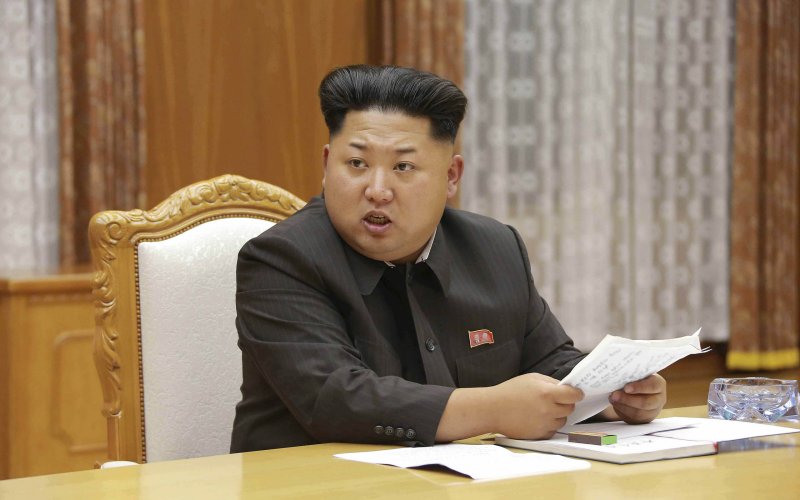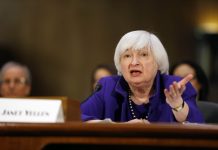
North Korea fired a ballistic missile Sunday morning, its first provocation since Donald Trump was elected president of the United States and one that sets up a test for the new administration in Washington.
The missile was fired shortly before 8 a.m. local time from a known test site in North Pyongan province in the west of the country, not far from the border with China, and flew over the Korean Peninsula and into the Sea of Japan, South Korea’s joint chiefs of staff said.
The launch happened while President Trump was hosting Japanese Prime Minister Shinzo Abe at his golf resort in Florida. In a brief joint appearance after the news of the missile test, the two presented a united front. Abe called the test “absolutely intolerable.” He said that in his summit with Trump at the White House on Friday the president “assured me the United States will always stand with Japan 100 percent.”
After Abe spoke, Trump, who had been standing behind him, took the microphone and said: “I just want everybody to understand and fully know that the United States of America stands behind Japan, its great ally, 100 percent.”
Trump did not mention South Korea, also an important U.S. ally. Neither leader answered questions.
South Korea’s military leaders were still working to analyze data from the projectile but said it appeared to be a medium-range Musudan missile, the type that North Korea had been trying to perfect last year. The Musudan is technically capable of flying as far as 2,400 miles, putting Guam within range and almost reaching Alaska. But the joint chiefs said this missile appeared to fly only 300 miles.
“The military is determining if the missile is a modified Musudan intermediate-range ballistic missile or the shorter range Rodong missile,” a military official told the South’s Yonhap News Agency.
But some analysts thought the launch could have been the first stages of an intercontinental ballistic missile capable of reaching the United States.
“I think we’re all waiting for the first two stages of the ICBM,” said Jeffrey Lewis of the Center for Non-proliferation Studies at the Middlebury Institute of International Studies. “They finished testing that engine on the stand so now it’s time to test it in the air.”
“I don’t think this [missile test] is designed to respond to Trump; I think this is part of Kim Jong Un’s continued efforts to try to advance his programs,” said Jon Wolfsthal, a senior nonproliferation official in the Obama administration now at Harvard’s Belfer Center. “But it has the added effect of calling Trump’s bluff. The real question is not what North Korea has done, but what the U.S. is going to do about it,” he said.
Kim’s regime has declared a goal of producing an intercontinental missile that can deliver a nuclear payload to the United States and last year appeared to be making a concerted effort toward achieving that goal. It conducted two nuclear tests and dozens of missile tests, including eight Musudan tests. Only one, in June, was a success, flying about 250 miles and reaching a surprisingly high altitude.
But the regime had not fired any since October, perhaps to avoid influencing domestic politics in the United States ahead of the presidential election and in South Korea, where the conservative president has been impeached and there is now a good chance of a progressive administration that is friendlier to Pyongyang.
In his New Year’s address, Kim said that North Korea had test-fired in various ways for a nuclear strike “to cope with the imperialists’ nuclear war threats” and said that the country had “entered the final stage of preparation for the test launch of intercontinental ballistic missile.”
In response, President Trump tweeted: “North Korea just stated that it is in the final stages of developing a nuclear weapon capable of reaching parts of the U.S. It won’t happen!”
However, apart from repeating the usual pledges to work to stop North Korea from reaching its nuclear goals, the Trump administration has said little on what it would do to stop Kim. The administration is understood to be embarking on a view of North Korea after eight years in which the Obama administration practiced “strategic patience” – hoping that it could wait out North Korea.
In Seoul, acting president Hwang Kyo-ahn convened a meeting of the national security council and said the South Korean government would work with its allies to ensure a “concerted response to punish North Korea.”
(c) 2017, The Washington Post · Anna Fifield
{Matzav.com}











